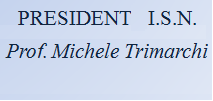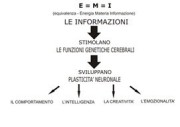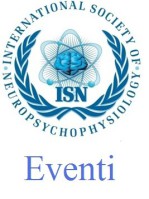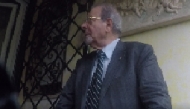Project of the Post-Graduate Course
For the Training of Trainers
THE SCIENTIFIC FOUNDATIONS OF HUMAN RIGHTS EDUCATION
Michele Trimarchi
FIRST MEETING
OF THE INTERNATIONAL STANDING COMMITTEE
FOR THE IMPLEMENTATION OF THE
DECADE OF HUMAN RIGHTS EDUCATION
BUILDING JOINT STRATEGIES
FOR HUMAN RIGHTS EDUCATION
Roma, November 4 - 5 1994
School of Advances Studies for Police Forces
Foreword
This Course is part of a Human Rights Education Project which is aimed at the training of trainers who each day need more and more to acquire scientific educational instruments that are, as such, universal.
The scientific foundations of the Course have been achieved through the integration of juridical sciences, human rights, neuropsychophysiological and educational sciences. This specific kind of integration is based on the multidisciplinary work carried out within the Departments of CEU.
The leit–motiv of the four phases of the Course is a “postulate” which states that information, stimulating the higher functions of the brain, produces behavior. Until a few years ago, notwithstanding the important advances in the field of the brain functions, very little was known regarding how human behavior is developed. A long series of theories and hypotheses remained disconnected, and this disconnection impeded the integrated knowledge of both the human brain and personality.
This document synthesizes the results of a research program carried out in our Centre as well as by other neuroscientists who have made enormous contributions towards solving the problems related to the mind-brain relationship. This relation, in fact, should now become an interactive continuum between brain and the social and natural environment in which a physiological or pathological personality may develop. This is due to the fact that mental illness as well as behavioral deviance depend mainly on the environment that their consciousness.
This approach confronts all institutions with their responsibility for a policy-making that meets the basic needs not only of the human physical organism, but mainly of Man’s spirit, in tune with the values expressed in the Universal Declaration of Human Rights sanctioned by the United Nations in 1948.
Introduction
The parcelization of the many specialized scientific disciplines has not fostered the knowledge of Man and his environment. People often speak about integration and multidisciplinarity in the world, but than in practice they continue to deal with their own subject matters without integrating their knowledge with that of others. This approach only increases chaos, insofar as those who are devoted to shouldering social responsibility lack the means of scientific evaluation when performing their functions.
To achieve the integration of juridical sciences and human rights we have to start from the assumption that juridical sciences are nothing but an instrument whereby Man has to be enable to develop a behavior for the fair expression of his personality. And so if laws are in tune with Man’s needs, why does the individual not always accept them and respect them? Why doesn’t he himself in those principles which emphasize his dignity? The answer to these questions may be because the State has failed to transfer to the citizen’s consciousness the profound content of those laws already inherent within him; this failure instead has resulted in deep social conflicts, first of all in the public agencies. This state has led individuals to reactions and refusals, to aggressiveness and life-style which are often in contrast with moral conduct and State’s laws.
The organization of a State has to increase its consciousness and responsibility, thus making its functions in harmony with scientific competence focused on the centrality of social justice and human dignity.
Nowadays we are at a crossroad: on the one hand, there is a socio-political and cultural system which is refused by both young people and adults, a system that is imposed and obliged. Man to act in a certain way; on the other hand, there is the refusal to accept any kind of imposition, which triggers intrapersonal, social and international conflicts.
And yet, Man can be enabled to love a certain kind of values, to respect them, want them and express them. To do this, the individual has to be considered globally along the span of his whole existence, respecting his right to his own evolution, both biological and cultural. Such a respect passes in-depth knowledge of the mechanisms that rule the Man-environment relationship and of how socio-environmental modulates the development of behavior as well as consciousness. Each item of information, in fact, activates neurons and brain’s chemistry, thus producing a series of reactions. These reactions can be positive or negative, can produce aggressiveness or socialization.
Our integrated studies made it possible to know a priori what is the item of information that car trigger an aggressive reaction or a quiet, gratifying response. This is due to the fact that “the brain invents nothing”, but rather responds to the information it receives. Therefore, information either violates or respects the brain, i. e. it violates or respects it in its genetic expression. Human beings, in fact, are endowed with a basic genetic program that rules the development of their behavior, thinking and positive and negative emotions, thus directing them in their socio-political and cultural evolution.
Therefore we can affirm that laws, norms and morals, as well as the Universal Declaration of Human Rights, are the evolutionary product of what is potentially held in our genes. As a consequence, it may be said by Human Rights we have “discovered”, and not “created”, the universal values, insofar as our genes pushed us to codify such values. This is the reason why when universal values are expressed or codified, none can refuse them, but rather all acknowledge them. This hypothesis, that is confirmed by our research and supported by experiences of others all over the world, is the core of education, especially the education of Man’s basic rights. A so-designed education will certainly stimulate the development of a universal consciousness able to solve present conflicts: ethnic and racial discriminations, fratricidal struggles for trivial interests, social unbalances, wars of religion and so on, are some of the most evident manifestations of this conflicting situation.
Physics affirm that everything follows a cause-effect principle. Physical laws are not only valid for macrosystems, but also for measuring the items of information reaching our brains. As a result, we can lo longer leave the explanation of the brain’s functions and the development of human behavior in the hands of an abstract psychology. It should be noted that we do not deny the spirit of Man; instead we try to provide, as Eccles, Sperry and many others have attempted to do, a scientific basis for eliminating the main-brain separation theory which permitted a pseudo-science to “kill” human spirit, thus leaving most people despaired. The brain is able to integrate, but the present “schizophrenic” culture hampers it to do so. Those few people who are able to remain free with their brains, with their own higher functions, become ingenious, wise, creative men and women, great scientists who “pay” for their creative ideas inasmuch as they escape the rules imposed by the mediocrity which is more and more inherent in present consumer driven societies. These people “pay” to make a contribution to the evolution of knowledge, to human and social evolution. Then, as Humankind evolves over time, the validity of those people is demonstrated to have been ahead of their times. This shows that an evolution of thinking, ideas and culture also exists.
Nowadays, Man is still trying to achieve a true democracy, and this is possible thanks to those who have codified it many years ago. The problem is not to create a theory, but to realize it practically. A good example of this is the Universal Declaration of Human Rights; it was codified in 1948, but we are starting only now to implement an effective dissemination so that it may finally become an integral part of the awareness of individuals. This is the reason for the existence of international institutions and of people who perceive the worth and importance of these universal values and, as a consequence, do their best to rapidly disseminate them; only such values, in fact, can give joy to life in place of boredom, the effort to live, or the conflicts implicit in everyday life. Socialization is a process which everybody wishes; the limits to its realization are created by cerebral mechanisms that intervene in communication and information exchange. These mechanisms have to be scientifically clarified if we really want Human Rights Education.
Educational method
Human rights are values that have to be acquired, memorized in given areas of the brain and then tested in the course of the teacher’s lesson. This means that the teacher has to be able to verify the in-depth acquisition of an item of information that is instantly turned into behavior, not postponing this verification to a subsequent phase. Therefore, lessons must be interactive: the teacher has to explain a concept and verify the extent to which students have acquired it. That is, teachers must systematically verify the acquisition and transformation of a given behavior on the basis of a specifically provided item of information that modifies that behavior. We can say that a similar educational method does not yet exist in the world. Someone calls it “maieutic”, but nowadays sciences enables us to make immediate verifications. Therefore, one has to understand this method very well to provide teachers with scientific tools to make it concrete, in Human Rights Education.
This teacher’s task is not only to “train”, in the strictest sense of the word, but to “educate”, that is ex-ducere brain’s potentialities since the evolution of behavior is dynamic and children are endowed with a genetic program which is ready to acquire our information. If the items of information are physiological to children’s development, that is to say if they do not violate the laws ruling genetic and neurophysiological mechanisms to compel the brain to memorize, then there will be the utmost availability of each individual to acquire our information. This can be verified starting from little children: if we provide them with useful information, they realize what is right insofar as this information is “measured” by their cerebral genetics. This is a scientific method that can start solving the huge conflicts of the world (which are linked to mechanisms of whatever kind of discrimination) because it helps the evolution of a behavior that integrates diversity and, in the meantime, allows the development of a consciousness stimulated and enriched by the diversity of human experience.
It is useful to underline such a science confirms Man’s culture and evolution at all levels: emotional, rational and spiritual, denying nothing. All that Man lives is a product of his/her brain, therefore if we explain the brain’s higher functions we cannot deny his/her living and we cannot ever create a theory which is fair and right to human psychology, i. e. a scientific theory that integrates diversities and enables the individuals to understand the value of diversity itself.
All this is difficult to achieve by using present educational system, insofar as these impose information and compel the individual to memorize it to an and different to that transmitted by the information itself. This end can be to get a degree, a good mark or a reward from parents. These are motivations that force the person to memorize information that he or she will never be able to use since he or she does not store it inward (that is, profoundly in him-self/her-self). Rather, that person will be forced to learn information: the difference is that the substantial aspect of information is not received synergically by the two cerebral hemispheres.
In fact, information carries a real, concrete message that the brain has to ne enable to live itself. Teachers shall have to verify that the students have understood, acquired, made an inward-process of memorization and express the message. If students express the concept, this means that the concept is rooted profoundly in their consciousness. Therefore, behavior is proportionally modified to the extent to which the person deeply stores in himself/herself the values carried by the information provided to him/her. As a result, teachers are needed who are able to teach and immediately verify how much of the message has been turned into consciousness and behavior. This is the goal of this Course, which is composed of a series of scientific, integrated phases that together give a dynamic view of the values that have to be the heritage of the teacher. In this way he or she will gradually be able to teach students how to deeply store the conceptual aspects of the Universal Declaration of Human Rights in their consciousness, which can then be applied in their social relations and in the public function, which is on fact doubly responsible for whatever violation of basic human rights.
Phases and subjects of the Course
Phase I: Definition of the substantial values of the Universal Declaration of Human Rights and perception, inward-storing and expression of these values in the behavioral development.
1) Studying the Universal Declaration of Human Rights with special reference to the provisions held in the Constitution.
2) Singling out the basic values of the Universal Declaration the of Human Rights and analyzing them from a juridical, social and psycho-pedagogic point of view.
3) Teaching an education methodology fit for inward-storing the above values and for translating them and expressing them in human behavior (from the inter-individual to the institutional level).
Phase II: Universality of the individual’s biological dignity and evolution of the positive law towards the acknowledgement of individual and social dignity: biology and psychology of ethnic and racial differences (equality despite diversity).
1) Evolution and acknowledgement of the concept of individual dignity in the framework of positive law.
2) Racism, xenophobia, intolerance: education for the respect of diversity.
3) Analysis and deepening of the concept of “equality despite diversity”.
4) Biological and social mechanisms of ethnic and racial discrimination.
5) Educational methodologies to overcome the above mechanisms and to express a behavioral attitude fit for integrating the diversities.
Phase III: State socio-political organization in consonance with the universality of human dignity in the respect for the ecosystem (integration among the environment, economic resources and cultural values).
1) The individual as an active subject within society; the boundary between individual freedom and social freedom.
2) The State as the “guarantor” of fundamental liberties and of the citizen’s welfare in all fields of its responsibility: Education, Public Health, Justice, Environment, Economy.
3) The institutional aims of education in the respect for human dignity: the centrality of the human person in school and university teaching.
4) The imperative law of human rights in the evolution of scientific knowledge in the service of State’s organization.
Phase IV: Management and resolution of social conflicts through the respect of human dignity.
1) Origins of intrapersonal and social conflicts.
2) The role of conflicts in social evolution.
3) How to overcome sanctions in conflict resolution.
4) Science and consciousness towards a true Democracy.







